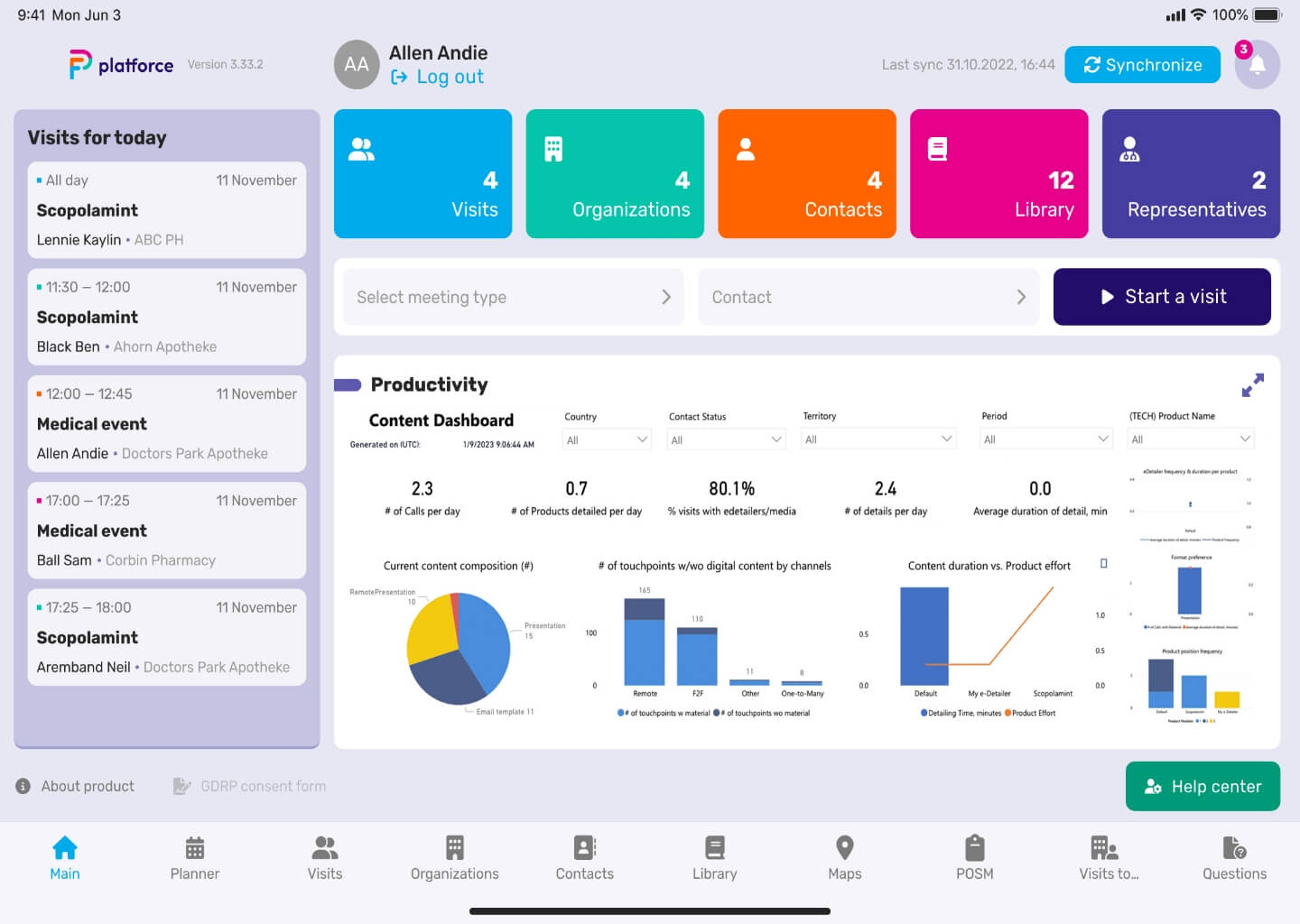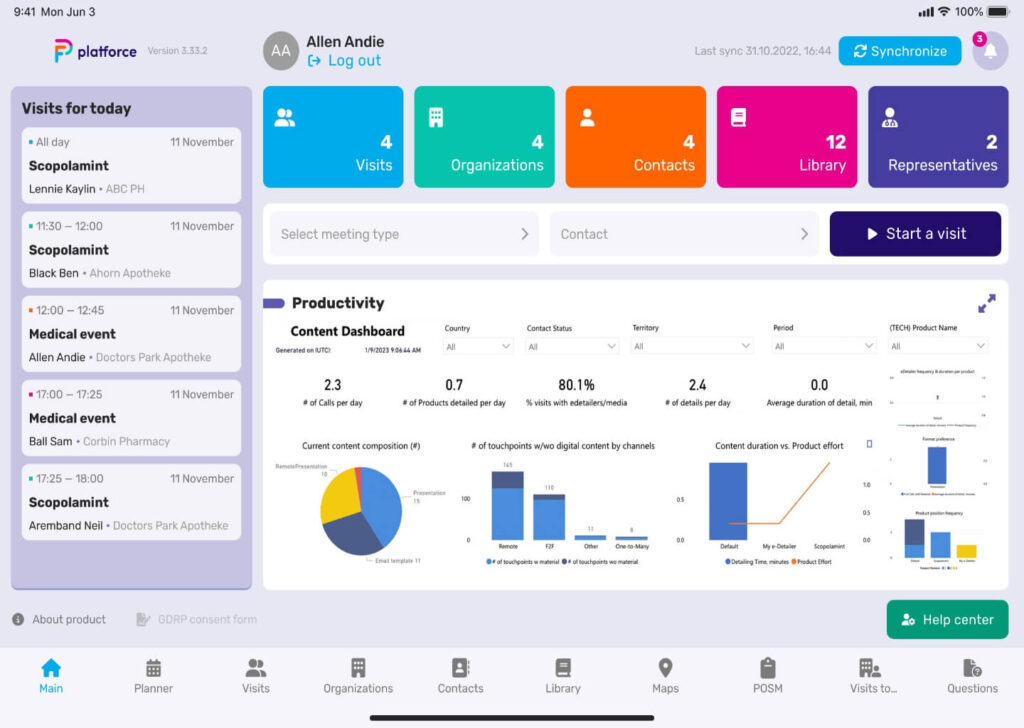Customer journey mapping is a powerful tool that helps you visualize and understand your customers’ experience from their first point of contact with your company events brand through the many touchpoints that follow, eventually leading to their conversion and beyond. By identifying key touchpoints and opportunities for engagement, you can better tailor your marketing strategy and maximize customer satisfaction, ultimately leading to increased loyalty and repeat business.
Implementing Artificial Intelligence (AI) into your customer journey mapping process can substantially and directly impact your strategy’s effectiveness. AI technologies provide insight into your customers’ behaviors and preferences by analyzing vast amounts of data. Using AI helps you continuously improve your understanding of your customer’s needs and adjust your approach based on their needs by making your journey map a dynamic, data-driven tool.
You can make more informed decisions about where to allocate your resources and how to engage with your audience through AI-enhanced customer journey mapping. By analyzing and predicting customer experience in this way, sales team members can increase their return on investment while customers receive a more personalized service.
- Understanding Customer Journey Mapping
- Leveraging AI in Journey Mapping
- Optimizing Touchpoints and Interactions
- Enhancing Customer Engagement and Retention
- Innovating with Customer Journey Maps
Understanding Customer Journey Mapping
Key Components of a Customer Journey Map
A customer journey map (CJM) visually represents a customer’s entire experience with your product or service. It helps you identify key touchpoints and opportunities for engagement. The main components of a CJM include:

Touchpoints: The points where customers interact with your brand, such as visiting your website, using your mobile app, or contacting customer support.
Phases: The stages customers go through in their journey, from first becoming aware to post-purchase.
Behaviors: What actions do your customers take at each touchpoint or phase?
Emotions: How do your customers feel during their interactions and experiences with your brand?
Motivations: Those things driving your customers to make decisions or take specific actions throughout their journey.
An in-depth CJM allows you to better understand your customers’ needs, preferences, and pain points to enhance their experience and increase their satisfaction.
Stages of the Customer Journey
A typical customer journey can be divided into several stages. While the exact stages might differ depending on your business, a common framework includes:
Awareness: The customer becomes aware of a problem or need and starts looking for potential solutions.
Consideration: The customer evaluates different products or services to determine which best meets their needs and preferences.
Decision: The customer decides to purchase a particular product or service.
Purchase: The customer completes the transaction, acquiring the desired product or service.
Post-Purchase: The customer uses the product, seeks assistance if needed, and possibly becomes a repeat customer or advocate for your brand.
Understanding these stages helps you identify critical customer touchpoints, and opportunities for engagement, ultimately improving the customer experience.
Importance of Customer Personas
Customer personas are fictional representations of your target and potential customers based on real data and insights about their demographics, behaviors, motivations, and goals. Developing accurate personas helps you:
Tailor your messaging for different customer segments
Personalize your customer interactions
Identify areas for improvement in your product or service
By incorporating multiple personas into your customer journey mapping process, you can create more targeted, relevant, and engaging experiences for your audience.
In summary, understanding customer journey mapping, its key components, and the importance of creating personas can help you optimize your customers’ experience with your brand, service teams, and product. Utilizing AI can further enhance your efforts, enabling you to anticipate customer needs and deliver more personalized interactions.
Leveraging AI in Journey Mapping
Machine Learning and Data Analytics
Incorporating machine learning and data analytics into your customer journey mapping process can significantly enhance your understanding of customer behavior. By analyzing large volumes of data, AI algorithms can identify trends and patterns that may not be immediately apparent. This enables you better to comprehend the key touchpoints and opportunities for customer engagement.
For instance, you can utilize AI-powered analytics tools to track customer interactions across various channels—such as social media marketing as emails, social media, and website visits—to reveal insights into their preferences, behaviors, and degree of satisfaction. You can optimize your marketing campaigns and sales efforts by identifying which channels resonate the most with your customers.
AI-Driven Insights and Prediction
AI-driven insights and predictive analytics empower you to anticipate customer needs and deliver a more personalized experience. By analyzing historical data, AI can identify patterns that improve customer satisfaction and loyalty points and generate predictions for future customer actions, enabling you to address their concerns and adapt your marketing strategies proactively.
Use AI-generated insights to:
Create segmented customer profiles that cater to specific demographics and interests, allowing for more targeted marketing campaigns.
Detect early signs of customer churn and implement timely interventions to retain valuable customers.
Identify upsell opportunities by recognizing customer behaviors and recommending personalized products or services.
Implementing AI-driven insights and predictions can help create tailored customer journey maps and enhance your customers’ shoes, purchase decisions, and overall engagement strategy. By combining AI, machine learning, and data analytics, you can better understand your customers and optimize the steps along their journey with your brand.
Optimizing Touchpoints and Interactions
Identifying Pain Points and Opportunities

To optimize your customer journey, it’s important first to identify pain points and opportunities within customer service teams across the various touchpoints. Analyzing data by implementing AI and machine learning can swiftly uncover hidden insights that help map out customers’ typical paths during their journeys, such as specific behaviors, different touchpoints used, and decision-making processes.
Use this information to identify specific customer pain points associated with certain touchpoints and interactions, like difficulties accessing support or unclear navigation on your website. Next, determine the different opportunities that arise from these findings, such as enhanced user experience or fine-tuning a feature within your product or service.
Consider the following steps:
Gather customer feedback: Use surveys, support interactions, and social media to collect customer opinions.
Conduct data analysis: Use AI and analytics tools to identify trends and patterns in customer behavior.
Map touchpoints chronologically: Sort touchpoints into pre-purchase, purchase, and post-purchase phases.
Improving Customer Service and Support
To tackle pain points and capitalize on opportunities, focus on improving customer service and support across touchpoints. Implementing AI can enhance customer interactions by providing personalized, efficient, and data-driven experiences, ultimately resulting in higher customer satisfaction, customer loyalty, and increased revenue.
Keep the following strategies in mind:
Personalization: Use AI to tailor experiences, recommendations, content, and offers to individual customers.
Proactivity: Deploy predictive analytics to identify and address potential issues before they become pain points.
Accessibility: Offer multiple channels for customer support (e.g., email, live chat, phone) and ensure a seamless experience across these channels.
Timeliness: Strive for quick response times and resolutions, as customers expect swift support.
Empathy: Train your support team to listen, understand, and empathize with customers to create a more human interaction.
By optimizing touchpoints and interactions with new customers through identifying pain points and opportunities and improving customer service and support with AI, you can enhance the overall customer journey and foster long-lasting, positive relationships with your audience.
Enhancing Customer Engagement and Retention
Strategies for Personalized Experiences
To improve customer engagement and retention, it’s crucial to understand and map out each customer’s experience and touchpoint throughout your customers’ journey. Using AI to identify key touchpoints and opportunities for engagement enables you to craft personalized experiences tailored to each customer’s needs and preferences. Segment your customer base and implement targeted marketing campaigns to give them a better experience with your brand.
Employ customer data, such as browsing history, purchase patterns, and social media interactions, and get insight into customer preferences and behaviors. This information can be used to offer relevant promotions, tailored and personalized content only, and bespoke product recommendations. By doing so, you empower customers to feel recognized and valued, which, in turn, nurtures loyalty and increases the likelihood of repeat business.
Measuring and Acting on Customer Feedback
Measuring and acting on customer feedback is essential to optimize the customer journey and strengthen relationships. Use various tools, like surveys, positive reviews, and Net Promoter Score (NPS), to collect customer feedback. Monitor social media, online reviews, sales rep calls, and customer support interactions for real-time insights into their experiences.
Surveys: Implement targeted surveys at key points during the customer journey to gather specific feedback about your products or services. Keep surveys concise and easy to complete to boost response rates.
Net Promoter Score: Use the NPS system to gauge customer satisfaction and loyalty. By categorizing your customers as promoters, passives, or detractors based on their responses, you can quickly identify the areas needing refinement and prioritize improvements.
Proactively listen and respond to customer feedback to demonstrate your commitment to their satisfaction. Address pain points, make tangible improvements, and communicate these changes to your employees and customers to show that their feedback is valued and acted upon. Doing so fosters trust, encourages retention, and has customers’ expectations, ultimately leading to growth and success.
Innovating with Customer Journey Maps
Integrating Journey Maps into Business Strategy
Innovative companies use customer journey maps to understand their customers’ needs and preferences better. By leveraging AI, you can delve deeper into analyzing your customers’ behavior, ensuring a more personalized and efficient customer experience throughout.
To integrate journey maps into your business strategy, identify the key touchpoints and opportunities for engagement. List each touch point and stage of the customer journey and examine how your product or service fits into the bigger picture here. Digital customer journey maps give you valuable insights helping you tailor your product offerings and marketing efforts to your target audience.
You and your team, including product owners and market research analysts, should collaborate closely to obtain a comprehensive view of the customer journey. Use AI to analyze large data sets, enabling you to pinpoint opportunities for improvement in each stage of the journey. This data-driven approach ensures your business stays ahead of the curve while optimizing the user experience continuously.
Future Trends in Customer Journey Mapping
As technology evolves, expect the integration of AI to play an increasingly essential role in customer journey mapping. Key future trends include:
Predictive analytics: AI’s power to predict customer behavior will enable better anticipation of their needs and desires, resulting in a more streamlined and engaging journey for your customers.
Automation: With more sophisticated algorithms, you can enhance the accuracy and efficiency of your customer journey maps, freeing up time for your team to focus on strategic decision-making.
Personalization: AI can help you deliver tailored content and experiences to your customers, ensuring higher satisfaction and increasing customer retention.
Real-time adjustments: Stay responsive to customer feedback and changing market conditions by harnessing AI’s ability to quickly identify patterns and analyze data.
Your continuous efforts to utilize AI-driven customer journey maps will enhance your customers’ experience, significantly impacting the future state of your organization and business growth. By staying informed about these future trends, you position your company to adapt and thrive in the ever-changing innovation landscape.





















